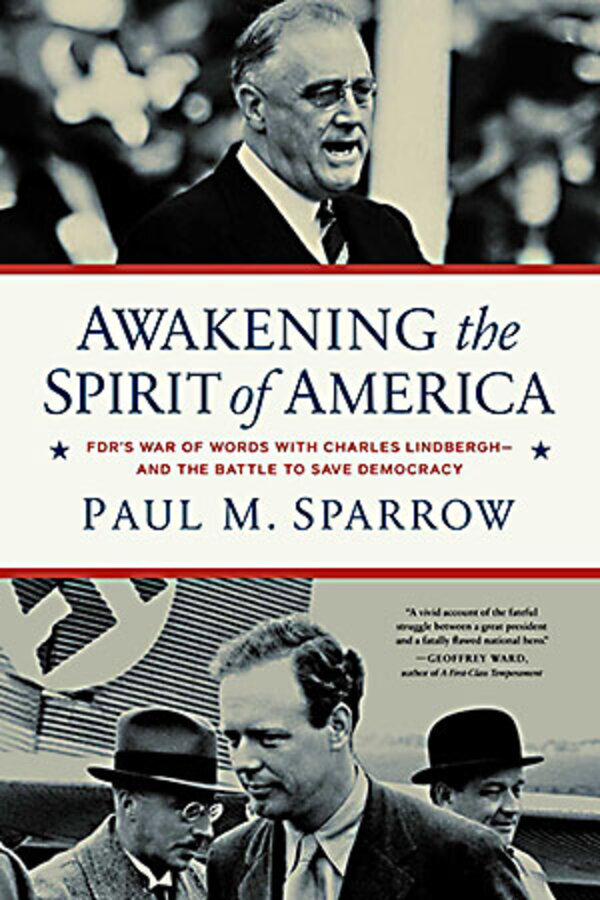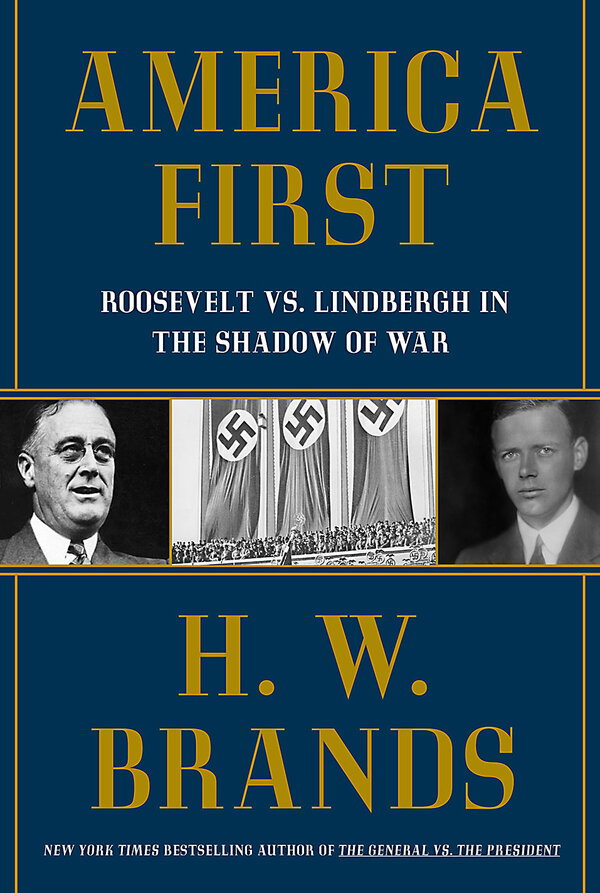Intervene or isolate? America’s role abroad has long been contested.
Loading...
In April 1941, aviator Charles Lindbergh headlined a rally in New York City for the America First Committee, a group opposed to American involvement in World War II. Lindbergh’s historic 1927 solo, nonstop flight from New York to Paris had made him a celebrity; convinced that President Franklin D. Roosevelt’s policies were inching the United States toward war, he had recently become America First’s most high-profile spokesperson.
The aviator addressed a crowd topping 10,000, while outside the venue, thousands of supporters and protesters lined the streets.
Two new books focus on the fierce debate at the time over whether the United States should enter the war – a debate that raged until Japan’s devastating attack on Pearl Harbor settled the question. Both books – Paul M. Sparrow’s “Awakening the Spirit of America: FDR’s War of Words With Charles Lindbergh – and the Battle To Save Democracy” and H.W. Brands’ “America First: Roosevelt vs. Lindbergh in the Shadow of War” – use isolationist Lindbergh and interventionist Roosevelt to explore the clashing positions over America’s role.
Both Sparrow and Brands describe the scene at the New York rally, where Lindbergh’s speech was met with enthusiastic applause. He spoke weeks after the passage of the controversial Lend-Lease Act, which broadened Roosevelt’s authority to provide aid to England and other countries fighting the Axis powers. “We have been led toward war by a minority of our people,” Lindbergh declared. “This minority has power. It has influence. It has a loud voice.”
In September, headlining a rally in Des Moines, Iowa, Lindbergh decided to speak more plainly. He made clear that the minority he frequently cited was American Jews. “Their greatest danger to this country lies in their large ownership and influence in our motion pictures, our press, our radio and our government,” he stated, adding, “We cannot allow the natural passions and prejudices of other peoples to lead our country to destruction.” He also warned that tolerance toward America’s Jewish population “depends upon peace and strength” and “cannot survive war and devastations.”
The reaction to Lindbergh’s speech was swift, with commentators accusing him of vilifying Jewish Americans, doubting their patriotism, and suggesting that they were more of a threat to the United States than Nazi Germany was. Lindbergh, according to Brands, “not only destroyed his own reputation ... but simultaneously discredited the antiwar movement and killed any plausible alternative to the globalist vision of Franklin Roosevelt.” America First limped along until disbanding in the wake of Japan’s December 1941 attack.
Roosevelt, meanwhile, had long been convinced that America was destined to play a leading part in world affairs. While FDR often claimed that the United States would send weapons to the Allies so that it wouldn’t have to send soldiers, Brands and Sparrow both make clear that Roosevelt was being deceptive. He was certain that America would eventually enter the war but felt he needed time to turn public opinion in favor of intervention. Lindbergh found Roosevelt untrustworthy, while FDR questioned the aviator’s loyalty.
Their similar subject matter notwithstanding, the two books are quite different. Brands, a prolific historian who teaches at the University of Texas at Austin, leans heavily on primary sources in his lengthy, atmospheric account. He quotes extensively from Lindbergh’s journals, FDR’s speeches, and other contemporary records. One chapter features long excerpts from journalist Edward R. Murrow’s 1940 radio broadcasts from England during the Blitz.
Brands occasionally offers his own analysis of the material, but further context would have been welcome. For instance, one chapter features selections from letters sent to the White House by Americans accusing Lindbergh of being a Nazi sympathizer. It includes the account of a man who claimed that he witnessed Lindbergh, during a trip to Berlin, serenely observing German soldiers as they brutalized civilians. The author doesn’t comment on whether the account is credible.
Still, Brands’ book, which devotes more space to Lindbergh than to FDR, paints a vivid picture of the aviator. “America First” suggests that the media’s intrusion into Lindbergh’s life after the 1932 kidnapping and murder of his infant son left him hostile toward the press and, by extension, toward democracies that protected press freedom. Arrogant and humorless, he lambasted British “decadence” and was impressed by German “virility.” Before the United States declared war on Germany and Japan, Lindbergh appeared unmoved by reports of Nazi atrocities, publicly stating that he was neutral regarding the war’s outcome. (It’s notable that while Sparrow more than once refers to Lindbergh as antisemitic, Brands avoids making that charge, never fully accounting for the aviator’s admiration for Nazi Germany.)
Roosevelt is more prominent in Sparrow’s slender volume, unsurprising given that the author is the former director of the Franklin D. Roosevelt Presidential Library and Museum. Sparrow, emphasizing the president’s firm commitment to helping Britain in the fight against fascism, pays special attention to FDR’s close relationship with British Prime Minister Winston Churchill.
Sparrow’s deep admiration for the 32nd president results, at times, in overwrought prose. After Pearl Harbor, the author writes, Roosevelt “rose to the occasion, providing a staggered nation vision and confidence. He took the weight of the free world on his paralyzed legs and carried America into the future – away from its isolationist past and into the age of the global superpower.”
In recent years some have seemed inclined to return to the isolationist past. During his 2016 campaign, Donald Trump revived the “America First” slogan to argue for a more self-interested American foreign policy. In a brief epilogue, Brands observes that “the keepers of the Rooseveltian consensus sighed relief when Trump lost to Joe Biden in 2020, and they applauded America’s reversion to interventionist form during Biden’s presidency.”
The continued relevance of these debates – particularly in regard to Russia and Ukraine today – makes these books not only edifying but also timely.








